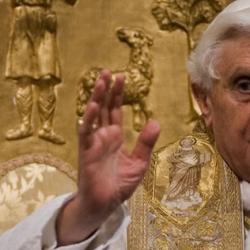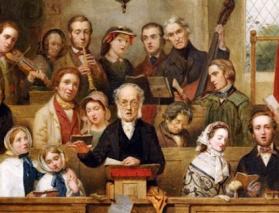Nicholas Vazsonyi’s Richard Wagner is subtitled “Self-Promotion and the Making of a Brand.” It’s a study of the methods Wagner used to establish himself and his music as a brand: “creation of a persona, public relations, development of a niche and brand, marketing embedded in the theatrical works themselves, and establishment of a hub and global network” (7).
Nietzsche already had pegged him: “Describing the theatricality which infused both his art and life, [Nietzsche] epigrammatically called Wagner an incomparable ‘histrio,’ someone who ‘staged’ everything, including himself.” In the philosopher’s view, this was “a psychological illness (Wagner est une névrose) who made music itself sick.” But the sickness isn’t Wagner’s only: “Nietzsche then makes the case that such is the quality of modernity itself: decadent, hysterical, neurotic, where mass success (Massen-Erfolg) is achieved only through showmanship and deception. Wagner is the modern ‘artist’ par excellence: ‘only sick music makes money nowadays; our big theaters subsist on Wagner.’ For Nietzsche, Wagner is like Franz Liszt and Victor Hugo, a sad comment on the times” (2-3).
Vazsonyi knows that Wagner wasn’t alone. Goethe and Byron had carefully cultivated public personas, and Wagner was following the well-worn path of the Romantic poets and writers, who responded to the rapid spread of popular publishing by positioning themselves as an avant-garde standing against crass materialism of sensational popular culture: “around 1800, the habit of not only writing theoretically about the artwork, but anticipating its appearance with the aesthetic manifesto, came into being. The idea that the artist would need to ‘create the taste by which he is to be enjoyed,’ as William Wordsworth phrased it, was a direct consequence of what the philosopher Jürgen Habermas has termed the ‘structural transformation of the public sphere’ in the eighteenth century, precipitated by the rise of journalism and the beginnings of what later came to be understood as popular culture. Efforts by Wordsworth and, a generation earlier in Germany, by Karl Philipp Moritz and Friedrich Schiller, were a response to the economic success of what Germans call ‘Unterhaltungsliteratur‘ (leisure reading) and what Wordsworth referred to more colorfully as ‘frantic novels, sickly and stupid German tragedies, and deluges of idle and extravagant stories in verse.’ The book trade that peddled such works was scorned by a self-selected group of artists who sought to separate themselves from the mainstream by shunning profit and creating aesthetically more challenging literature that offered readers greater spiritual and intellectual rewards. Writing in part for an audience that did not (yet) exist, these authors embodied an ‘avant-garde’ mentality before the term even came into use. In a larger sense, they were resisting emergent consumerist attitudes that had already been awakened by the new fashion industry as well as the phenomenon of the branded product” (3).
In consumer culture, of course, un-branding is another form of branding, and the pose against commercialization could be the path to commercial success: “Like the Romantics who preceded him, Wagner vehemently opposed the modern view of the artwork as a commodity for speculation and profit. He, too, would write the aesthetic manifesto, try to ‘create the taste by which he was to be enjoyed,’ and announced that he was composing for an audience that did not as yet exist.” However sincere, Vazsonyi argues that Wagner was borrowing from the very world that he renounced: “Some of the claims he made, the inflationary language he used, the insistence with which he pressed them home, and the methods he used to promulgate them came precisely from the commercial world he was simultaneously vilifying” (4-5).
Artistically renouncing the profit motive can be highly profitable.















